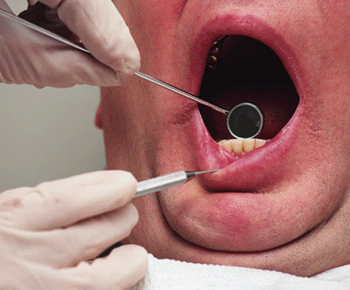Dentists could soon swap their drills for painless tools based on pulsed infrared lasers. Andrei Rode of the Australian National University and colleagues have shown that ultrashort pulses of radiation from powerful modern lasers can safely remove material from a tooth without damaging the surrounding area. Previous attempts to develop this technique have failed because they used longer-lasting laser pulses that heated and cracked healthy parts of the tooth (A Rode et al 2002 J. Appl. Phys. 92 2153).

Lasers are widely used in medicine to remove soft biological tissue, and scientists are keen to develop a laser-based tool to replace dentists’ drills. But hard dental material can only be removed by very powerful lasers.
Such high powers have been achieved in previous studies by using laser pulses lasting several picoseconds, or 10-12 seconds. These ‘heat ablation’ techniques proved unsuccessful because they were too hard to control – strong thermal shocks led to uneven removal of material and made the teeth crack.
But lasers have now been developed that emit more powerful bursts of radiation that last just tens of femtoseconds, or 10-15 seconds. Using such pulses, Rode’s team has successfully removed dental enamel without the excessive heating that can damage healthy tissue. In contrast with earlier attempts, the new technique removes matter by a process known as electrostatic ablation.
The team used two titanium-sapphire lasers that emitted infrared pulses with a frequency of 1 kHz. One laser emitted pulses lasting 95 fs with an average power of 0.5-0.6 W, and the other one emitted pulses lasting 150 fs with an average power of 0.8-1.0 W. Healthy human teeth – donated for medical research – were used in the study.
Rode and co-workers found that these laser pulses were powerful enough to eject electrons from atoms on the surface of the teeth, ionzing the atoms and molecules in the dental enamel. This ionization created a local electric field strong enough to remove the ions from the enamel altogether. Since the laser pulses are shorter than the characteristic heat conduction time of dental matter, there is no time for heat ablation – and its damaging effects – to occur.
The researchers admit that their technique removes enamel around a hundred times more slowly than mechanical drills, but they say that decayed dental material – which is softer than the healthy teeth used in their experiment – could be removed ten times faster than this.



